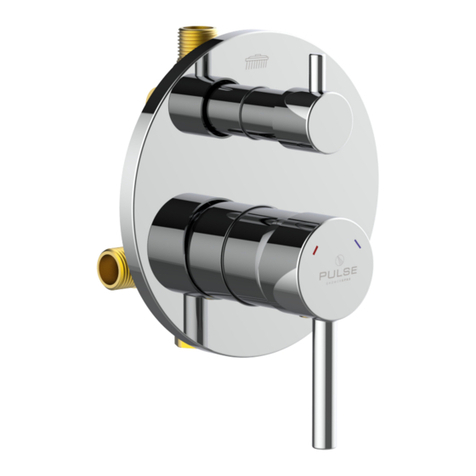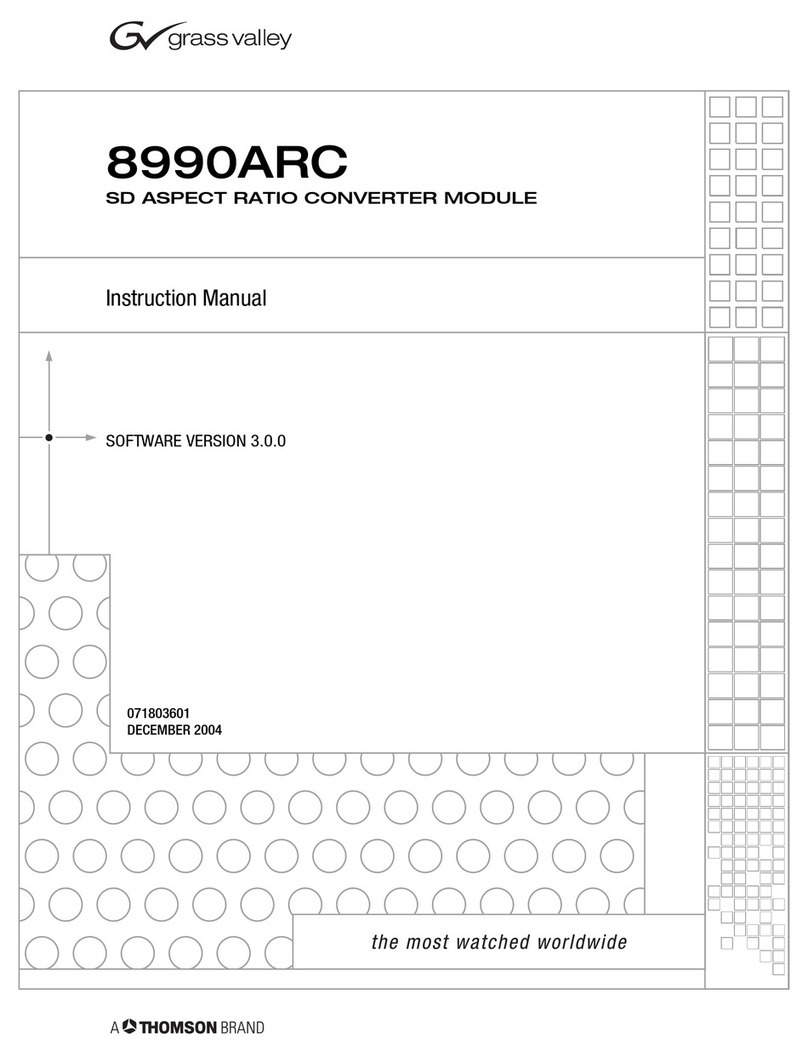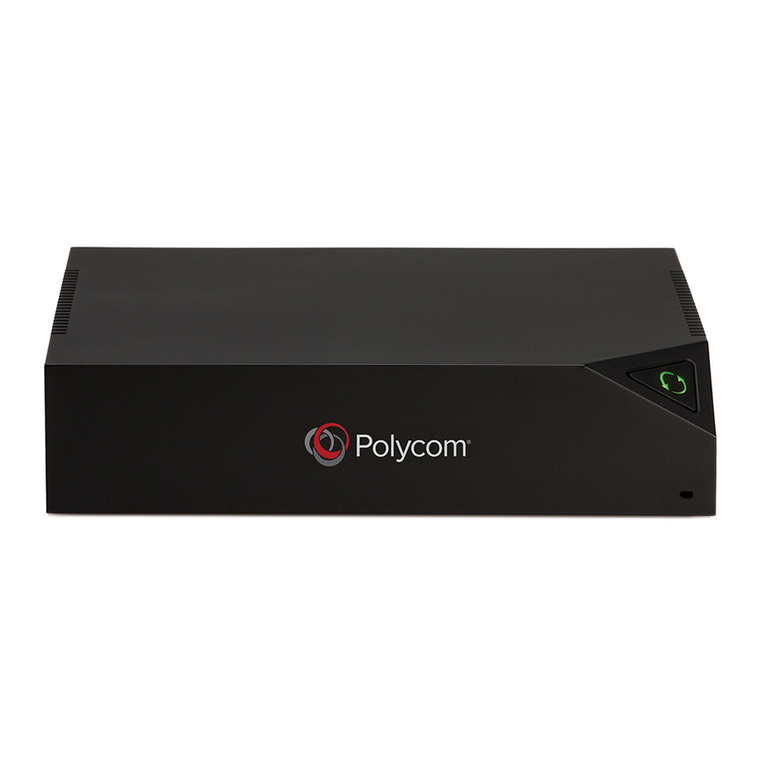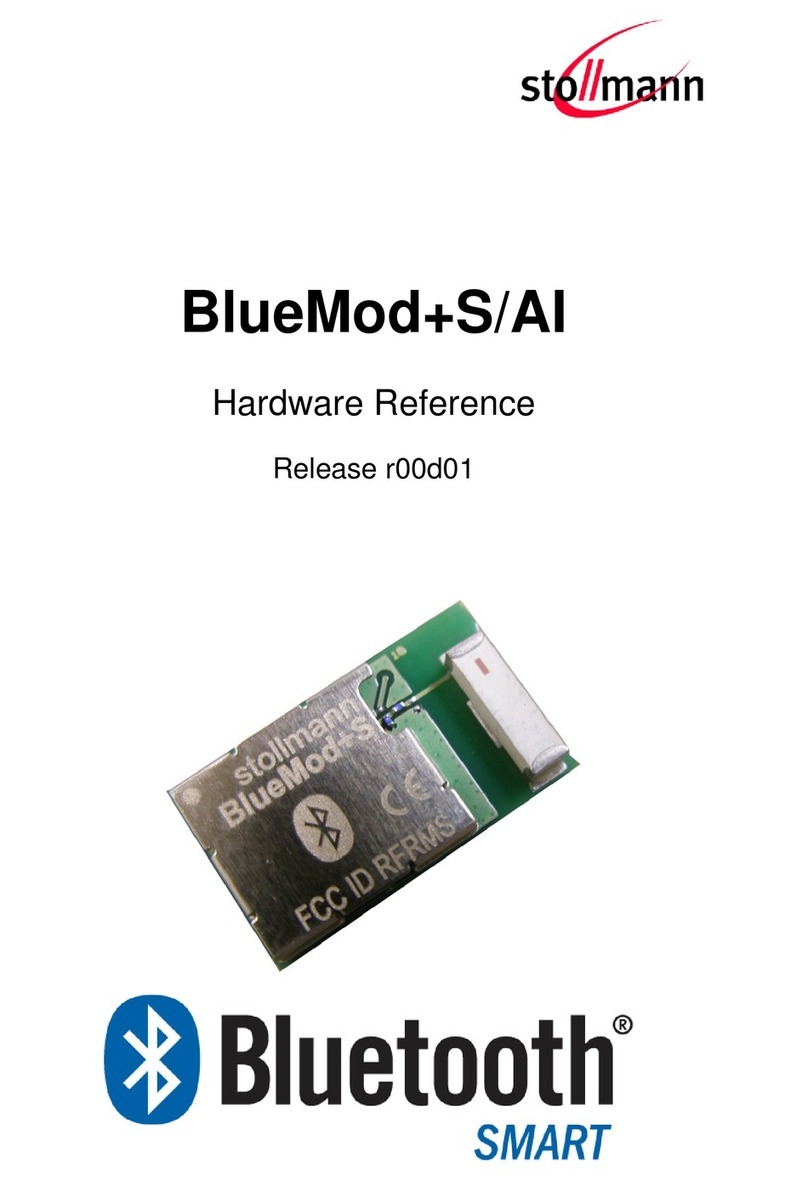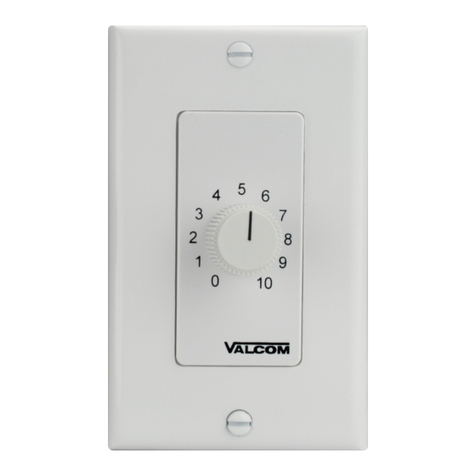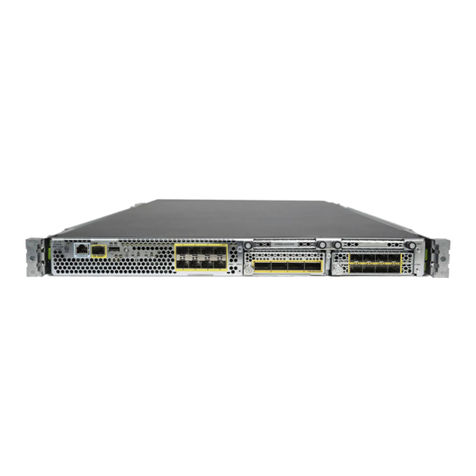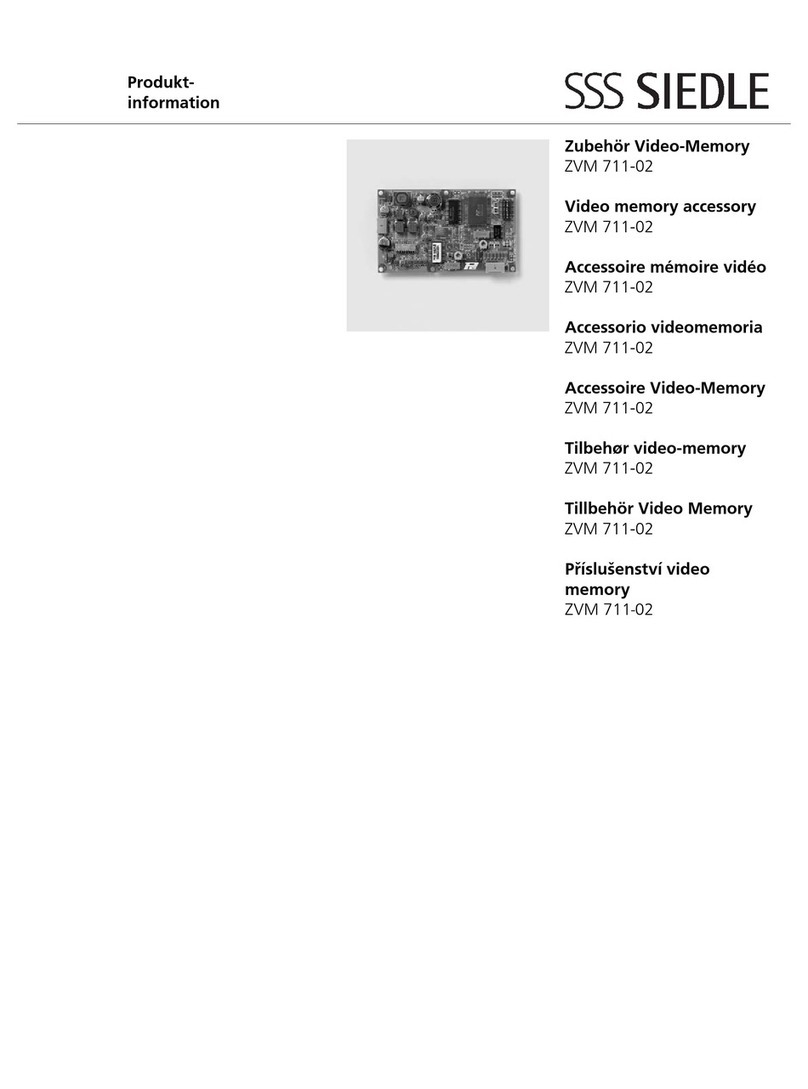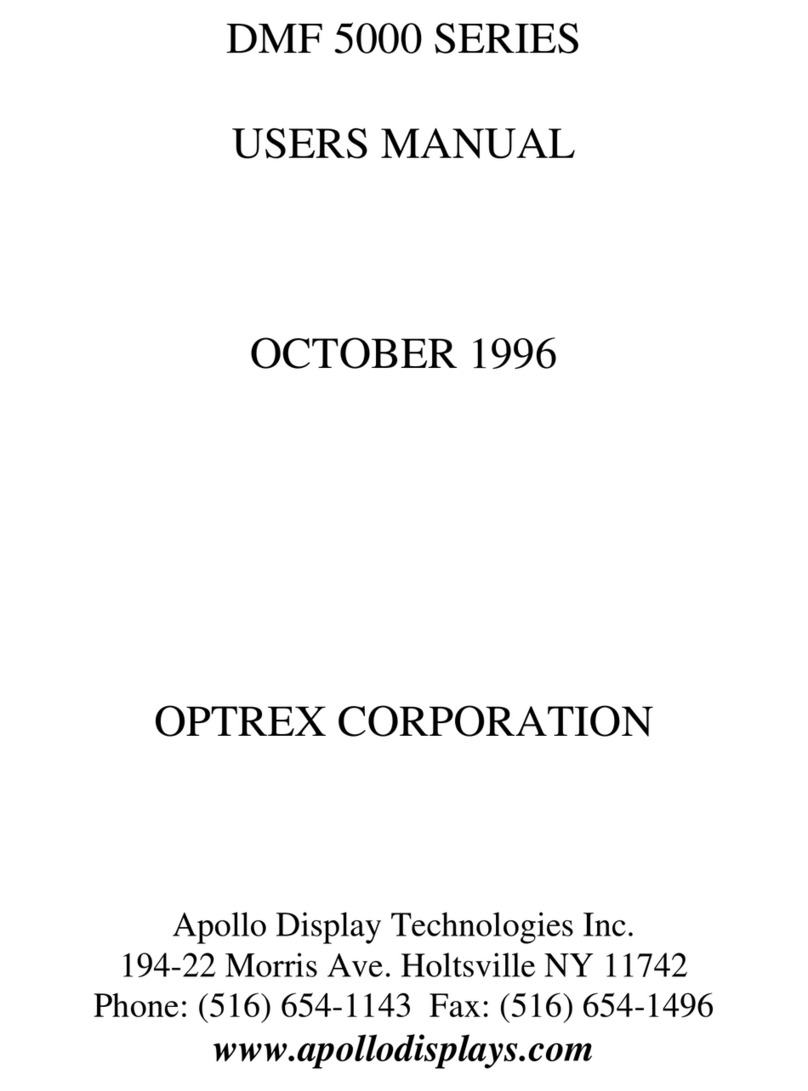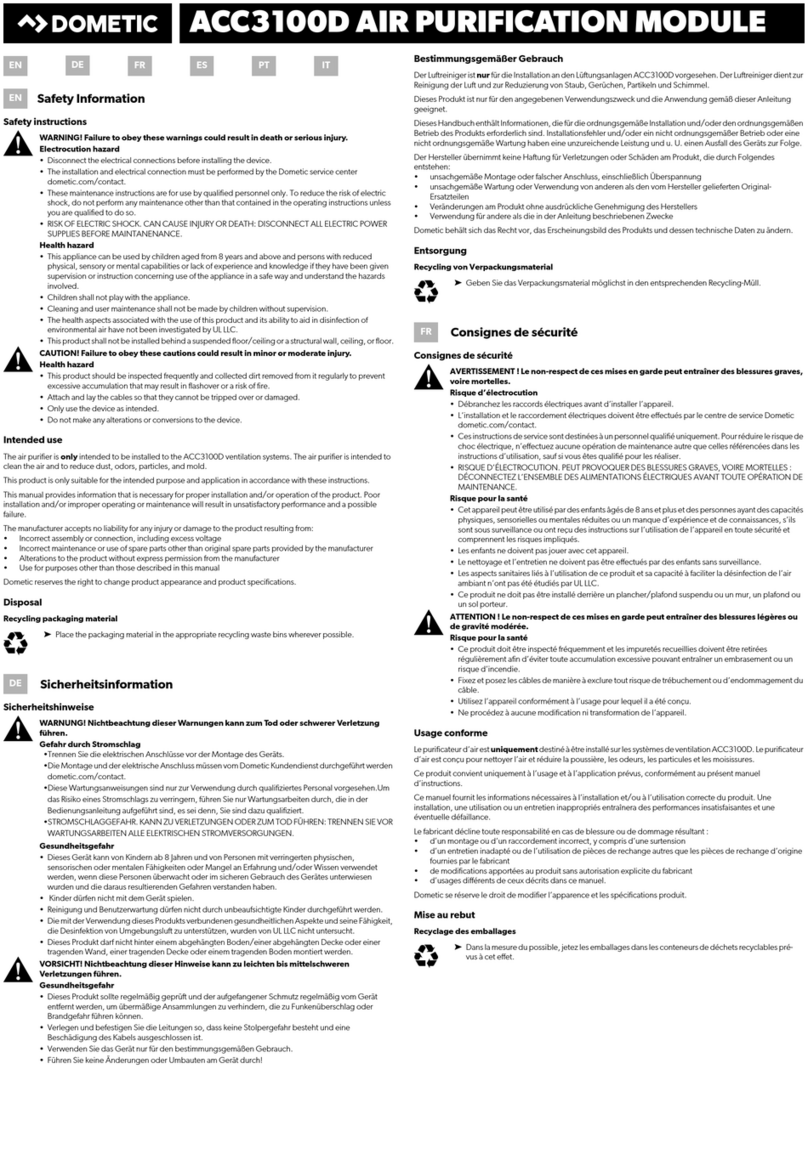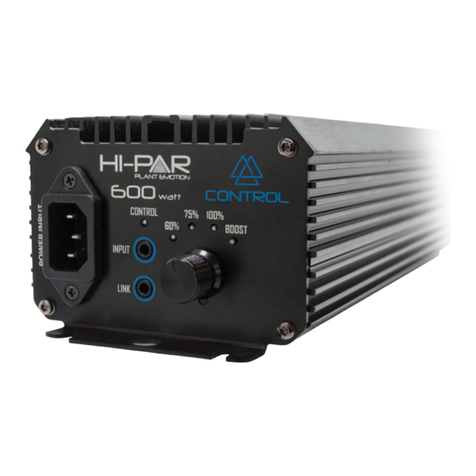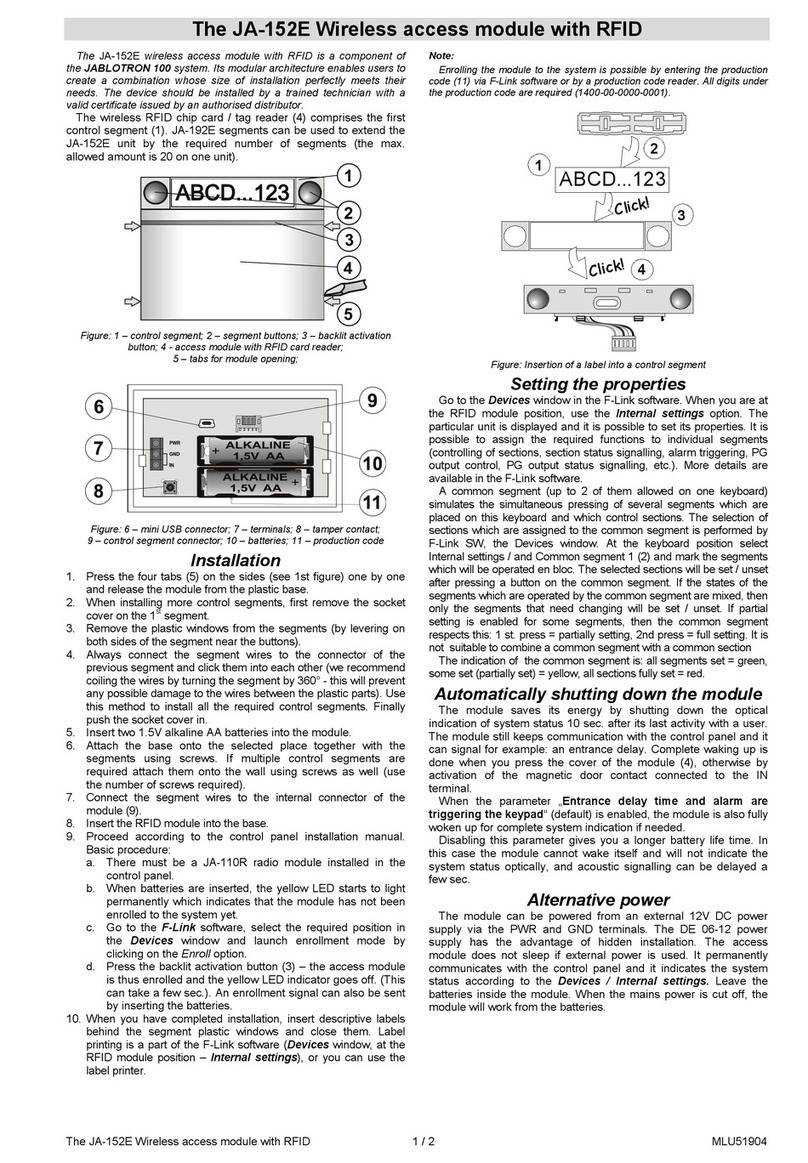Coyote DataCom DR-915 Assembly Instructions

DR-915 Data Radio Module
INTEGRATOR’S GUIDE
Coyote DataCom, Inc. 12721 Benson, Overland Park, KS 66213 •Tel. 913-685-8350 •Fax 913-685-0732

DR-915 OEM DATA RADIO MODULE
___________________________________________________________________________________________
Revision A INTEGRATOR’S
GUIDE 2
TABLE OF CONTENTS
General Information..............................................................................3
RF Exposure Statement.........................................................................3
Configuration........................................................................................6
Specifications......................................................................................14
DR-915 Mechanical Overview...............................................................15
Pin Definitions.....................................................................................16
Approved Antennas.............................................................................18
In-System Configuration......................................................................19
FCC Compliance Warning and Class B Statement ..................................24

DR-915 OEM DATA RADIO MODULE
___________________________________________________________________________________________
Revision A INTEGRATOR’S
GUIDE 3
DR-915 Data Radio
General Information
This DR-915 is a frequency hopping spread spectrum data transceiver operating in the
902-928 MHz ISM band. The unit is designed to operate under Part 15.247 of the FCC
rules and regulations and is designed as an OEM module for integration into other
products or field devices. When installed using an approved antenna, the user need
only ensure that the radio’s FCC label or a copy of the FCC label is clearly visible on the
outside of the integrated product.
Caution: If this radio is integrated into another product, the user is responsible for
complying with the external labeling requirements as directed in the FCC Rules and
Regulations part 15.19. To avoid obtaining an FCC certification, the user may only use
antennas that have been tested and approved for use with this radio.
The unit operates on 25 discrete frequencies within the ISM band, each frequency
about 800kHz apart. Using a frequency agile phase-locked loop synthesizer, the radio is
able to scan all 25 channels and quickly acquire synchronization with a transmitting
radio.
The radio is connected to a host device using a 10-pin SIP header. This connection
provides the radio with the required DC power source, allows it to be programmed and
configured and provides all I/O lines for both an asynchronous serial as well as an SPI
interface.

DR-915 OEM DATA RADIO MODULE
___________________________________________________________________________________________
Revision A INTEGRATOR’S
GUIDE 4
DR-915 DATA RADIO
REGULATORY
FCC RF Exposure Statement
This device complies with FCC radiation exposure limits as set forth for an uncontrolled
environment.
This device should be installed and operated with a minimum separation distance of 20
cm between the radiator and your body.

DR-915 OEM DATA RADIO MODULE
___________________________________________________________________________________________
Revision A INTEGRATOR’S
GUIDE 5
DR-915 DATA RADIO
CONFIGURATION
Default Settings
Serial Baud..............................................................................9600 bits/second
Port......................................................................................................... UART
RX buffer size.................................................................................. 190 bytes*
TX buffer size .................................................................................. 190 bytes*
CTS assert....................................................................................... 180 bytes*
CTS de-assert.................................................................................. 150 bytes*
TX assert.................................................................................180 bytes*/5 mS
Channel..........................................................................................................1
Source Address...............................................................................................1
Destination Group...........................................................................................1
Destination Address ........................................................................................1
Acknowledgement.....................................................................................None
Power save..................................................................................................Off
*Factory setting; cannot be changed.

DR-915 OEM DATA RADIO MODULE
___________________________________________________________________________________________
Revision A INTEGRATOR’S
GUIDE 6
DR-915 DATA RADIO
CONFIGURATION
The DR-915 is supplied with an easy to use Windows98™configuration program. The
configuration program allows the user to control the operation of their radio network.
Installing
The configuration software does not require an installation. Simply run it from the CD
labeled “DR-915 Tools” or copy it onto another drive. Start the program by locating
and double clicking on the “Programmer” icon. This will launch the configuration
program and display the screen below.

DR-915 OEM DATA RADIO MODULE
___________________________________________________________________________________________
Revision A INTEGRATOR’S
GUIDE 7
Click on the “PC Settings” tab, then select which COM port will be used to connect to
the data radio. As shown below, COM1 thru COM4 are available. This setting will be
retained the next time the configuration program is run.
Getting Started
To configure the radio, click on appropriate tab for the radio being configured. Then
select the radio Communications Port. The default setting is for asynchronous serial
mode, UART (Universal Asynchronous Receiver/Transmitter). The default baud rate is
9600 bits per second. The interface baud rate can be set to standard values between
2400 and 57600 as shown on the following page. This mode supports 8 data bits, 1
stop bit and no parity.

DR-915 OEM DATA RADIO MODULE
___________________________________________________________________________________________
Revision A INTEGRATOR’S
GUIDE 8
DR-915 Repeater

DR-915 OEM DATA RADIO MODULE
___________________________________________________________________________________________
Revision A INTEGRATOR’S
GUIDE 9
Addressing
The radio has been designed to be very versatile in its addressing functions. Each radio
has its own identifier consisting of a group number and address number.
The Source Group specifies which group of radios the unit being configured belongs to.
The Source Address specifies the address within that group that uniquely identifies this
radio. The radio will decode packets containing a Destination Group and Address
matching its own. With the exception of broadcast messages, all others will be ignored.
Broadcast messages are those messages where the destination address is 0 and the
group is the same as the radio receiving it, or those messages where the destination
address and group are both 0. When the destination group is set to 0, all radios in all
groups will decode the packet.
Likewise, the Destination Group specifies which group of radios the transmissions will
go to. The Destination Address specifies the individual radio within that group that will
receive the message.
Channel
The Channel selects the frequency the radio will transmit and receive on. There are 60
channels available for the use of multiple networks or to avoid interference. Radios
must be on the same channel to communicate.
TX Hold Off Time
TX Hold Off Time sets the amount of time that must elapse after the last byte to be
transmitted is received by the radio before a transmit packet will be initiated. Setting
this value higher will prevent numerous small packets from being sent when the
transmit data is not continuous. The default setting will be adequate for most
applications.
Acknowledgement (Ack-Back™)
The DR-915 has powerful, built-in, path management features designed to make OEM
integration quick and easy. Activating packet acknowledgement will virtually guarantee
all data transmitted is received. Any packet transmitted by the DR-915 is then
acknowledged by the receiving radio. If any packet is not acknowledged, the
transmitting radio will resend the data. While reducing throughput, this feature also

DR-915 OEM DATA RADIO MODULE
___________________________________________________________________________________________
Revision A INTEGRATOR’S
GUIDE 10
handles missed transmissions as well as performs path management, allowing full
duplex communications.
The Retries field specifies the number of attempts the radio will make in trying to
resend unacknowledged packets. The Timeout field determines how long the radio will
wait for the acknowledgement before resending.
Number of Repeaters
The range of the DR-915 may be extended by using repeaters. Repeater modules
receive data packets on one group code and retransmit the packet on another group
code. For example, a repeater configured with group codes 3 and 4 will translate the
following packets and retransmit them as follows:
•A packet received with a destination group code of 3 will be received and
retransmitted with a destination group of 4.
•A packet received with a destination group code of 4 will be received and
retransmitted with a destination group of 3.
This method of group code translation guarantees that data is transferred through the
repeater and not directly between radios.
When the DR-915 is in Ack-Back™mode and there are repeaters in the system, the
amount of time needed to receive packet acknowledgements increases. By specifying
the number of repeaters in the Configuration program, this delay is calculated and the
radio is updated correctly. Always set this field with the maximum number of chained
repeaters in the system.

DR-915 OEM DATA RADIO MODULE
___________________________________________________________________________________________
Revision A INTEGRATOR’S
GUIDE 11
Path Management
The DR-915 has powerful path management tools to help ensure successful field
installations. The Path Management window has two modes, Continuous and On Sync.
The Continuous mode allows the installer to look at competing signals on the radios
channel and determine if there is a potential interference problem. Running in this
mode for an extended period of time will show the installer the level of the strongest
signal seen by the radio. The solid indicator needle indicates the current signal level
being received while the dashed indicator needle shows the strongest signal received.
Clicking the Stop button will reset the dashed indicator.
Continuous Mode Signal Monitoring

DR-915 OEM DATA RADIO MODULE
___________________________________________________________________________________________
Revision A INTEGRATOR’S
GUIDE 12
The On-Sync mode allows the installer to look only at radio transmissions for DR-915 or
DR-915T radios. When packets are received, the transmissions current and maximum
signal strength is displayed along with the packets source group code and address.
This allows the installer to ensure there is adequate signal strength with enough fade
margin to guarantee reliable operation. Signals in the green area are considered very
reliable, the yellow area are marginally reliable and the red area are considered not
reliable.
The graph will display information on up to 16 radio addresses. As new addresses are
received, they will replace the oldest ones in the graph. The last received signal is
indicated by a cross hatch in the bar. Clicking on the Stop button will reset the graph
information.

DR-915 OEM DATA RADIO MODULE
___________________________________________________________________________________________
Revision A INTEGRATOR’S
GUIDE 13
On-Sync Signal Monitoring

DR-915 OEM DATA RADIO MODULE
___________________________________________________________________________________________
Revision A INTEGRATOR’S
GUIDE 14
Code Upgrading
The DR-915 has been designed for easy field upgrades. Using the RS-232 Serial
Adapter board, a DR915 Programming cable, a standard Serial Configuration cable and
a current version of the DR-915 Configuration program running on the users PC, the
radio can be re-flashed with new operating code. Special customer code can also be
loaded in this manner.
With the radio mounted on an RS232 Serial Adapter board, connect a program upgrade
cable from the programming connector, J4, on the Adapter board to the parallel port on
the PC. Connect a standard DB9 male to female serial cable from the Adapter board’s
DB9, J2, and to the serial port on the PC. Power the Adapter board using the supplied
12-volt wall module connected to the Adapter board’s power jack, P8.
Using the DR-915 Configuration program, click on the Flash tab. Select the software
version from the Software Version drop-down box and then press the Program Flash
button. The Configuration program will then read the setup information from the radio,
upgrade the radio code and reload the original configuration.
Flash Upgrade Tab

DR-915 OEM DATA RADIO MODULE
___________________________________________________________________________________________
Revision A INTEGRATOR’S
GUIDE 15
DR-915 DATA RADIO
SPECIFICATIONS
Overall
Frequency ....................................................................................902-928 MHz
Frequency Control......................................................................PLL Synthesizer
Transport .............................................. Transparent, Point-to-Point Guaranteed
Data Interface ................................Asynchronous TTL, Synchronous Serial (SPI)
Channels......................................................................................................62
Configuration.................................Windows98™ Application using PC Serial Port
Duty Cycle.............................................................100% all modes of operation
Data Interface Rate..................................2400,4800,9600,19.2k,56k bps (N,8,1)
Temperature................................................................................ -30 to +50 °C
Range ....................................................up to 10 miles depending on conditions
Data Encoding ..................................................................... Proprietary Method
Receiver Sensitivity..................................................................-101 dBm usable
Modulation ............................................................................... Direct FM (FSK)
RF Data Rate........................................................................................50 kbps
Data Flow Control ...............................................................Hardware using CTS
Transmitter Output ............................................................................... 200mW
Error Detection .................................................................................16 bit CRC
Power Requirements
Input Voltage................................................................................7.5 –15 VDC
Input Current.....................................................................70 mA Receive Mode
250 mA Transmit Mode
Regulatory
United States..........................................................................15.249 Compliant
Canada..................................................................................RSS210 Compliant
Mechanical
Size................................................................................................1.75” x 2.5”
Antenna Connector ....................................................................... Reverse SMA

DR-915 OEM DATA RADIO MODULE
___________________________________________________________________________________________
Revision A INTEGRATOR’S
GUIDE 16
DR-915 Data Radio
RADIO HARDWARE INTERFACE
DR-915 Mechanical Overview

DR-915 OEM DATA RADIO MODULE
___________________________________________________________________________________________
Revision A INTEGRATOR’S
GUIDE 17
DR-915 Data Radio
RADIO HARDWARE INTERFACE
Pin Definitions for Connector P2
PIN
FUNCTION
1Ground
2CTS
3DTR
4Receive Data
5Transmit Data
6Reset
7SPI Clock
8SPI MISO
9SPI MOSI
10 VCC
PIN 1 –Ground
Power and signal ground for the data radio.
PIN 2 –CTS
Clear to Send. This line will be low when the radio is ready to accept data to
transmit. When the radio raises this line, the user application must cease
sending data to the radio or a buffer overflow may occur resulting in a loss of
data.
PIN 3 –DTR
Data Terminal Ready. This line is used to place the radio into configuration
mode. It should be held low for normal operation.
PIN 4 –Receive Data
This is data received by the radio and sent out to the user device. The data
format is a standard, asynchronous stream at the user set baud rate with one
start bit (low) followed by 8 data bits and one stop bit (high). This is a TTL-level

DR-915 OEM DATA RADIO MODULE
___________________________________________________________________________________________
Revision A INTEGRATOR’S
GUIDE 18
interface. Applications requiring RS-232 must use an appropriate interface circuit
or a DR-915 RS-232 interface board.
PIN 5 –Transmit Data
This is the data sent by the user device for the radio to transmit. The data
format is a standard, asynchronous stream at the user set baud rate with one
start bit (low) followed by 8 data bits and at least one stop bit (high). This is a
TTL-level interface. Applications requiring RS-232 must use an appropriate
interface circuit or a DR-915 RS-232 interface board.
PIN 6 –Reset
Taking this pin low will reset the radio’s micro controller. For normal operation,
this pin should be left open.
PIN 7 –SPI Clock
This is the SPI clock signal. Data is clocked into and out of the DR-915 on the
rising edge. This pin is also used for updating the code in the radio.
PIN 8 –SPI MISO
This is the SPI data from the radio to the host. This pin is also used for updating
the code in the radio.
PIN 9 –SPI MOSI
This is the SPI data to the radio from the host. This pin is also used for updating
the code in the radio.
PIN 10 –VCC
This is power to the radio. It should be 7.5 to 15 vdc.

DR-915 OEM DATA RADIO MODULE
___________________________________________________________________________________________
Revision A INTEGRATOR’S
GUIDE 19
DR-915 Data Radio
APPROVED ANTENNAS
The DR-915 may only be used with one of the following antennas without
obtaining further approvals.
•Antennex model AX-FG9026 omni directional base station antenna
•Antennex model AX-B8956C collinear mobile antenna
•Cushcraft model CCPC906N Yagi antenna

DR-915 OEM DATA RADIO MODULE
___________________________________________________________________________________________
Revision A INTEGRATOR’S
GUIDE 20
DR-915 DATA RADIO
IN-SYSTEM CONFIGURATION
The DR-915 may be reconfigured while in a host system. This allows the users system
to change the source or destination address and group codes on-the-fly, adding great
versatility to the Ack-Back delivery mode.
General Structure
The general structure of the protocol for programming the DR915L/LT radios is as
follows:
[0xAA] [command] [checksum] [0x55]
where command consists of byte #1, byte #2, byte #3, ..., byte #n as defined below,
and
where the checksum is an 8-bit checksum (a simple unsigned 8-bit addition of bytes)
of data bytes 1 thru n, 0x55, and
where the checksum does not include the beginning 0xAA, itself, or the ending 0x55.
Numbers preceded by “0x” are hexadecimal. All others are decimal.
The DTR pin must be raised prior to sending any commands to the radio. Once a
complete command has been sent to the radio, the DTR pin should be immediately
lowered. If a read command of some sort was issued, the device should be ready to
receive the information immediately. If a Write Command was issued, the device must
allow 250 milliseconds for the radio to reboot itself with the new values before any
other commands can be issued.
As bytes are sent to the radio, each byte will be immediately echoed back to the sender
for confirmation that the radio received the byte.
When any data is being read from the radio, the device should simply read in the data
without echoing the bytes back to the radio.
Command Structure
The format of the data bytes for sending a command to the radios is as follows:
Table of contents
Popular Control Unit manuals by other brands
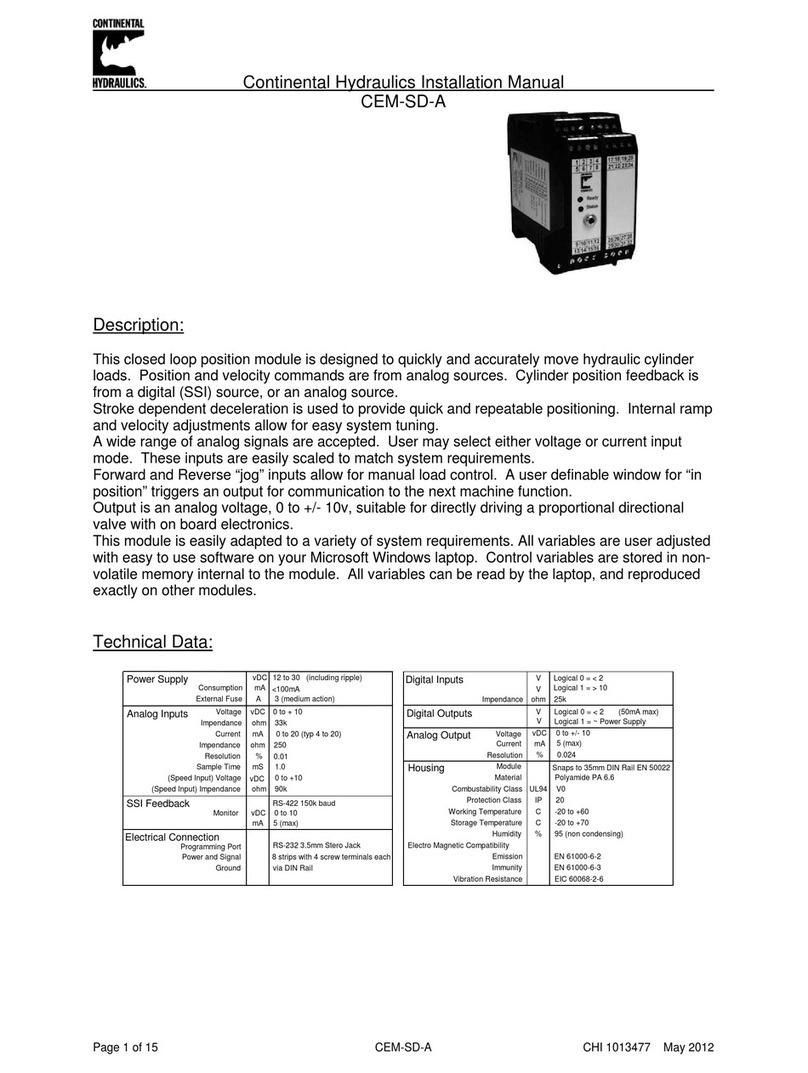
Continental Hydraulics
Continental Hydraulics CEM-SD-A installation manual
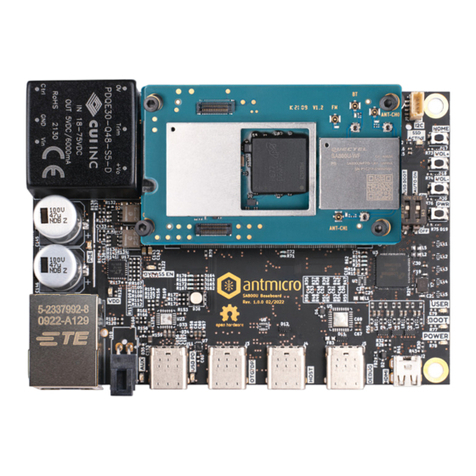
Quectel
Quectel SA800U-WF user guide
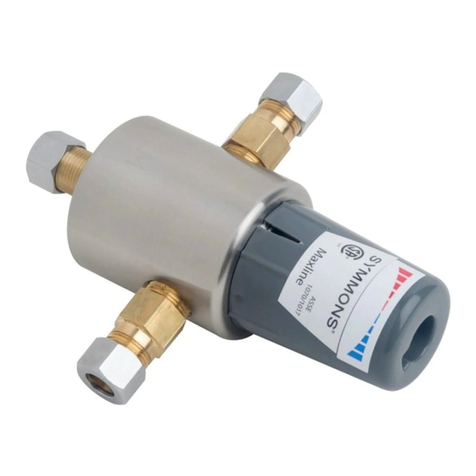
Symmons
Symmons 7-210-CK Operation & maintenance manual
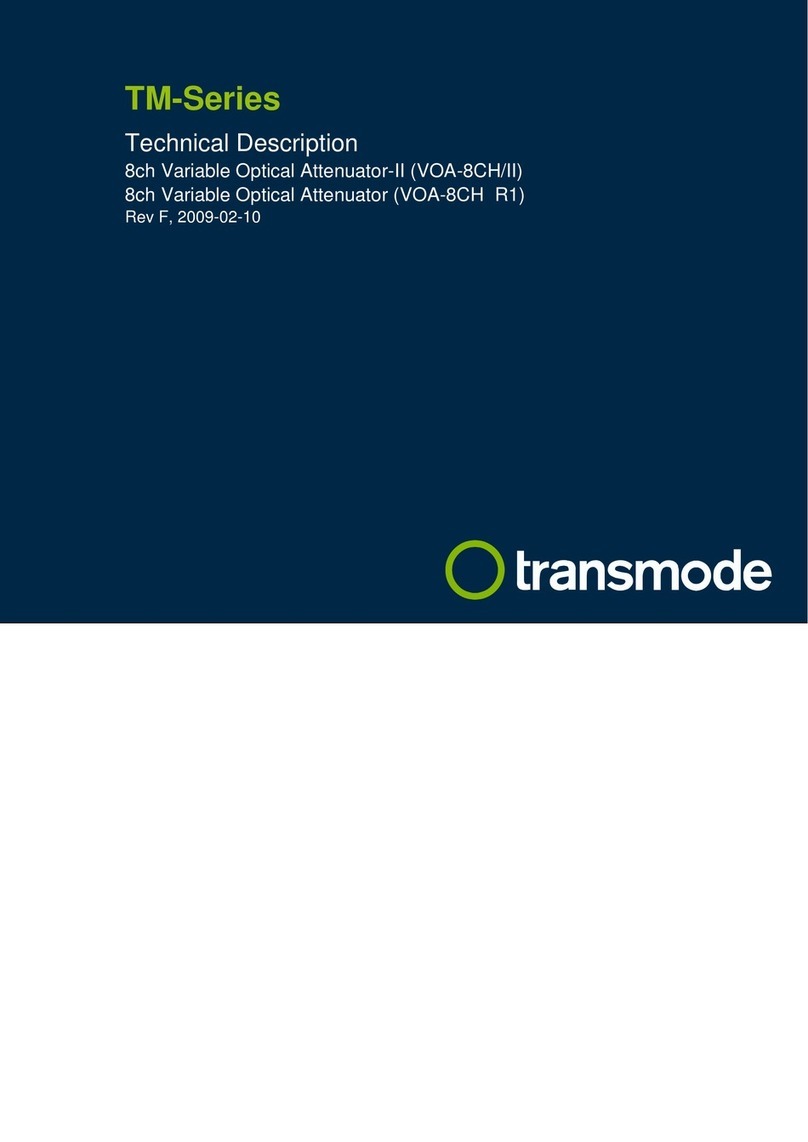
Transmode Systems
Transmode Systems TM-Series Technical description

National Instruments
National Instruments NI-9208 Getting started
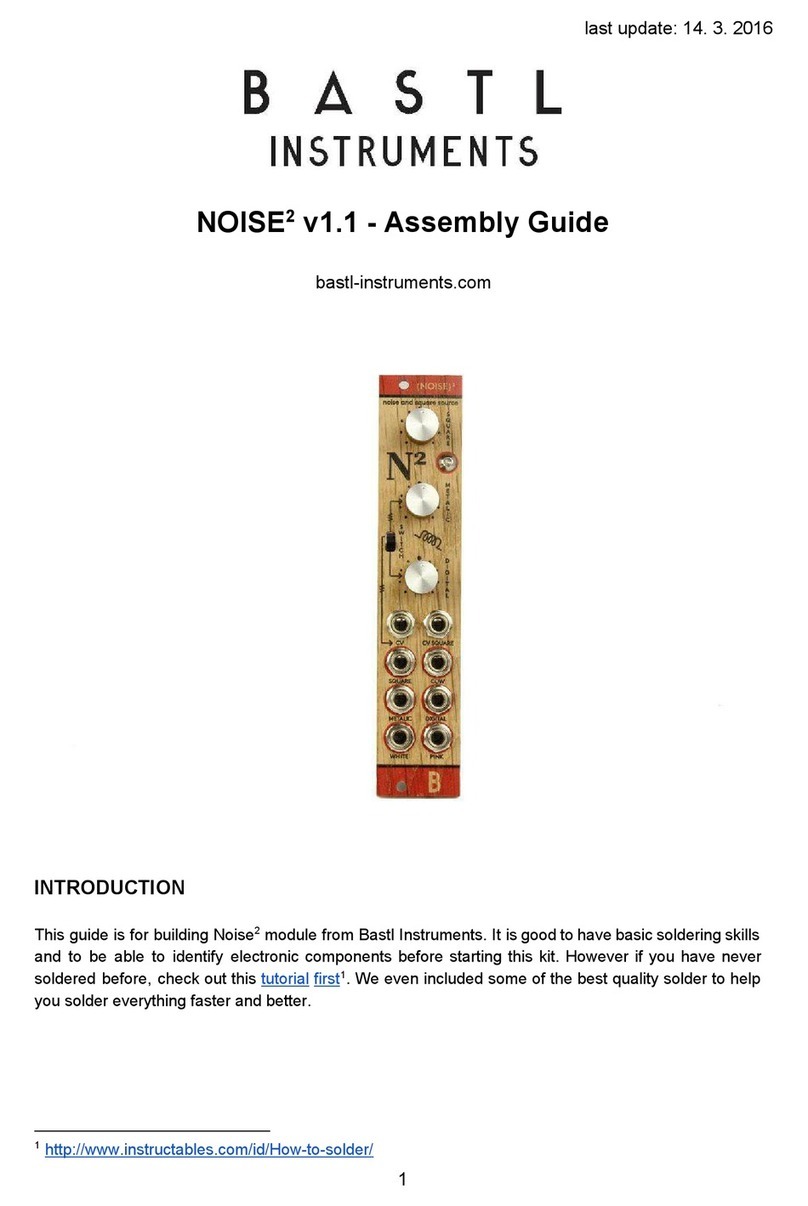
Bastl Instruments
Bastl Instruments NOISE 2 Assembly guide
